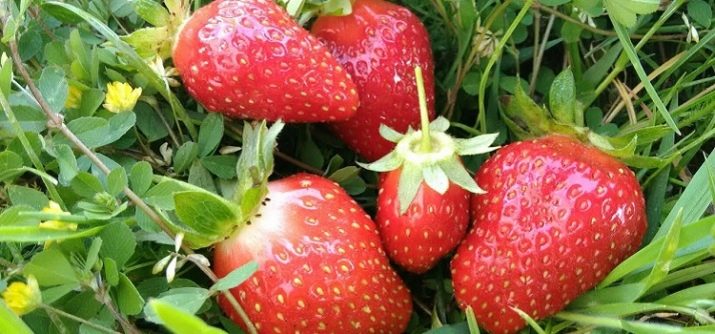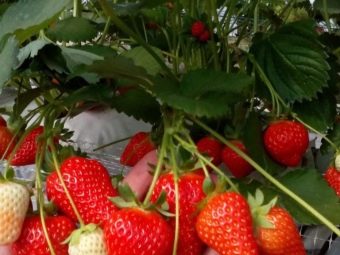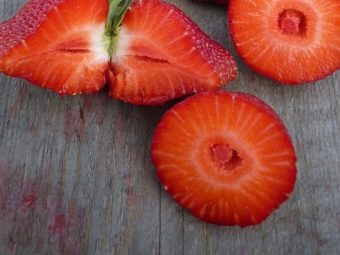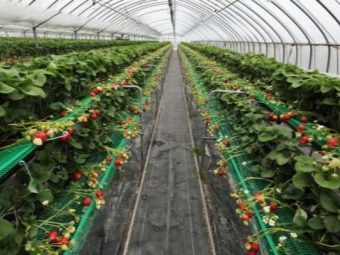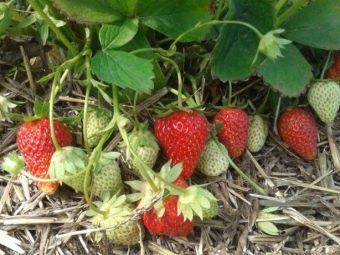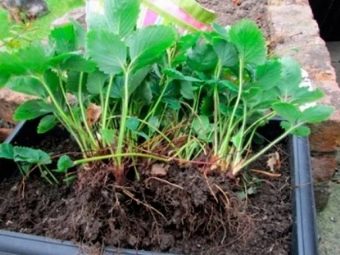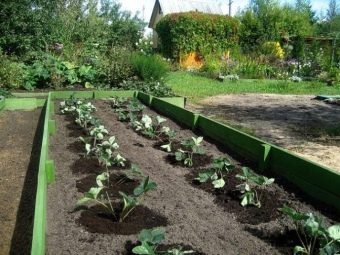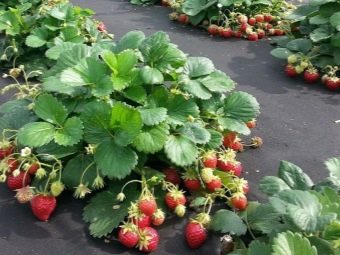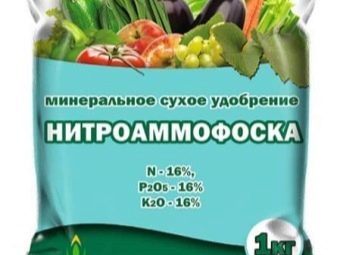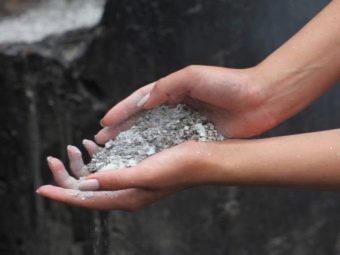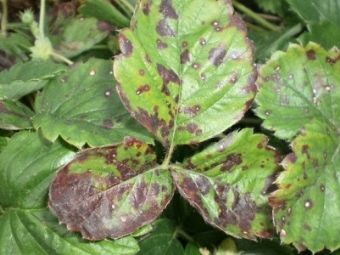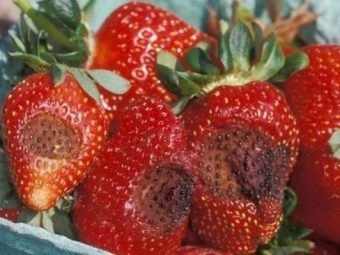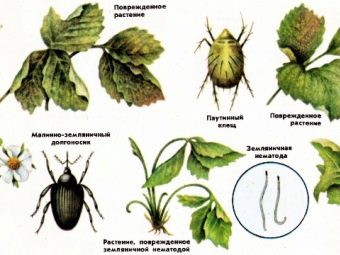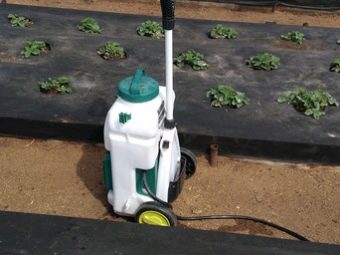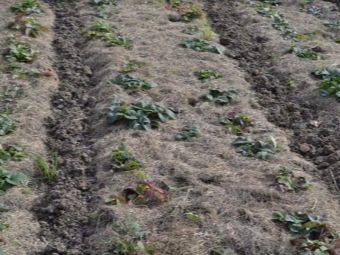Murano Strawberry: variety description and agrotechnical features
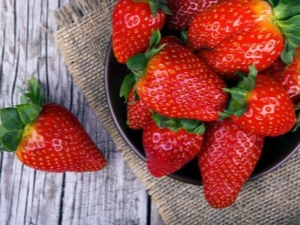
For many years, strawberries occupy a leading position in the ranking of the most popular and popular berries in adults and children.This culture can be found on all household plots in different countries of the world and climatic conditions. A fragrant and healthy berry is not only consumed fresh, but also makes winter preparations.
To maximize the preservation of all the vitamins and nutrients, experienced housewives will frost the berry in order to delight all family members with a tasty delicacy during the winter period. The high demand for this crop made the breeders to work on the cultivation of new varieties with improved taste and resistant to various types of diseases.
Variety description
Garden strawberries "Murano" is a new remontant variety in the domestic agrotechnical market. This variety is bred by Italian breeders for use in the confectionery industry and restaurant business. Among the main features of the variety it is necessary to highlight such brightest ones as:
- small size of bushes (height up to 25 cm, width up to 45 cm);
- harvesting several times during the summer season;
- small amount of green mass;
- large white flowers, located above the main leaves;
- the period from the beginning of flowering to fruit picking is not more than one month;
- the formation of more than two whiskers on the same plant;
- the mass of berries can reach more than 25 grams;
- the weight of the harvest from one plant exceeds 1500 grams;
- berries have a dense, fleshy, juicy and fragrant structure.
Important! Experienced gardeners recommend a variety of "Murano" to beginners, who, even with agrotechnical errors and adverse weather conditions, will be pleased with a good harvest.
Sort "Murano" has the following advantages:
- the opportunity to get a harvest not only in the open field, but also in the greenhouse, hydropart and in multi-level structures;
- short period of fruit ripening;
- several breeding methods;
- long preservation of commodity indicators;
- resistance to low temperatures;
- compact size of the bush;
- transportability;
- harvesting throughout the summer period;
- high taste parameters;
- dense and juicy pulp;
- resistance to various types of diseases;
- large fruit size;
- the possibility of growing in different climatic regions;
- unpretentiousness.
This variety has the following disadvantages:
- drying out of the fruit during a severe drought;
- the formation of a small number of landing whiskers;
- high price range of buying young plants.
Important! The universal properties of the berries make it possible to grow it not only in private plots, but also on an industrial scale.
Landing
For obtaining young plants of a grade of "Murano" You can use the following breeding methods:
- rooting of whiskers;
- division of the main bush;
- sowing seeds.
The main task when breeding a plant with a mustache is the timely and correct rooting of the shoots. At the uterine bush should be left only the most healthy shoots, and the rest removed. There are rooting methods such as:
- planting a mustache near the main bush;
- transfer to separate landing containers.
Both rooting methods are effective and have received positive feedback from gardeners. To get strong and healthy bushes, you need to carefully approach the choice of purchased planting material.
There are several rules that you need to know and use when choosing planting material, namely:
- the number of young leaves should not be less than three;
- the color of the stem and leaves is green;
- the root system should not be sluggish and dry;
- root length must be greater than 5 cm;
- high-quality young plants belong to the first reproduction.
Strawberry propagation by dividing the bush is used only in the autumn period after the fruiting stage. Each new plant should have a core and a powerful root system.Growing planting material by sowing seeds is the most time-consuming method of obtaining young plants. Sowing seed should be carried out at the beginning of winter. Installation of additional lighting and special lamps is the main condition for obtaining strong young plants. For large fruits, you need to competently approach the planning of the site with berries. On dense beds, plants do not produce the planned yield, and the fruits become small and tasteless. The optimal distance between the bushes should not be less than 30 cm, and between the rows - 45 cm.
This plant has a negative attitude to acidic and swampy soils. Landing in areas with wet and heavy soil will lead to rotting of the root system, the development of dangerous diseases and subsequently the destruction of the bushes. The most favorable soil for plants is black soil or peat. Planting young plants should be carried out in mid-autumn, when the average daily temperature will reach comfortable levels. To obtain a crop in the year of planting, the plants are planted in the middle of spring, when the threat of frost is over.
Care
Regular watering at least 1 time per week to prevent drying and wilting of the plants, will ensure the ripening of juicy and fragrant fruits. For prolonged drought, experts advise to increase the amount of fluid and the frequency of its introduction. Subcortex is an important stage for the growth and development of fragrant berries. Strawberries positively relate to the introduction of wood ash, and feeding with yeast extract and nettle decoction will give strength to both old bushes and new plants.
It is worth paying attention to such basic stages of fertilizer application as:
- Spring - the use of fertilizers with a high nitrogen content;
- after flowering - it is advisable to use manganese, iron and phosphorus;
- autumn - additional application of mineral phosphate fertilizers.
Disease control
The variety "Murano" has a high resistance to various types of diseases, but there are several causes that reduce immunity and become the cause of the appearance of various diseases, namely:
- lack of mineral and organic fertilizers;
- improper feeding;
- untimely watering or lack thereof;
- drying of the root system;
- high density of plants on the site;
- freezing of plants in winter or in early spring.
It is worth considering the main types of diseases.
- Wilt from fusarium or late blight. Signs - stunting and drying of plants. Methods of struggle - the observance of crop rotation, the use of siderite, the introduction of lime, processing chemicals.
- Gray and leathery rot. Symptoms are thinning of the petioles, wilting of the leaves, covering the fruits with mold. Ways of struggle - soil mulching, use of special preparations.
- Mealy dew. Signs - the appearance of plaque on the bushes, rotting berries. Methods of control - the use of chemicals, moderate watering.
- Spotting Signs - the appearance of brown spots. Prevention - cleaning of affected leaves and treatment with special preparations.
- Viral diseases - These are the most dangerous diseases that are not amenable to treatment. Sick plants are dug out and burned, and the garden tools are disinfected.
It is worth making the following measures of comprehensive disease control:
- after the disappearance of the snow cover - watering the bushes with boiling water with manganese and processing with special chemical and organic preparations;
- planting plants that repel pests and prevent the development of diseases;
- removal of diseased and dry leaves throughout the year.
Damage to plants and reduce the amount of harvest can not only diseases, but also dangerous pests, such as:
- strawberry weevils;
- transparent tick;
- nematodes;
- aphid;
- cicadas;
- whiteflies;
- wireworm;
- Medvedka;
- Chafer;
- slugs;
- ants;
- birds;
- thrips.
On the shelves of specialized stores you can find a large number of chemical and organic products. Make the right choice and purchase the right tool will help experienced consultants. Along with the acquired drugs, it is necessary to use folk remedies that will not only help to improve the plant, but also become an environmentally friendly fertilizer.
Reviews and tips gardeners
It is necessary to adhere to the following recommendations of experienced gardeners to care for this crop:
- mulching the root area will not only protect the plant from drying out of the root system, but also retain moisture;
- the selected area for strawberries should not be under direct sunlight; plants are best planted in the shade of trees or outbuildings;
- drip irrigation is the best type of soil moisture;
- regular application of mineral and organic fertilizers will help grow healthy and strong plants;
- spring treatment of plants will prevent the development of dangerous types of disease and protect against pests;
- shelter with non-woven bushes will prevent the freezing of planted plants;
- Autumn harvesting of fallen and dry leaves is a mandatory procedure, which will increase the amount of the crop next year.
To prevent the development of diseases, you must observe the following rules:
- disinfect all planting material;
- growing crops on one bed for not more than five years;
- compliance with the norms and rules of crop rotation;
- shelter beds mulch material;
- treatment of bushes with immunity stimulants;
- competent care for the growth and development of healthy and strong bushes.
An annual transplant is an impractical procedure that reduces the volume and quality of the crop. Positive feedback from gardeners from different climatic regions suggests the feasibility of growing this crop, and its unpretentiousness will allow to get a harvest, even for beginners. Before buying planting strawberry material “Murano”, it is necessary to carefully study the varietal characteristics of the plant and the basic agrotechnical rules.
Having spent the minimum amount of physical strength and agrotechnical measures, the plants will thank for a good harvest, which will become the favorite dessert of the whole family. Murano strawberry is a godsend for all owners of homestead land in many countries of the world.
In the next video you will find a review of the first harvest of strawberries varieties "Murano".

